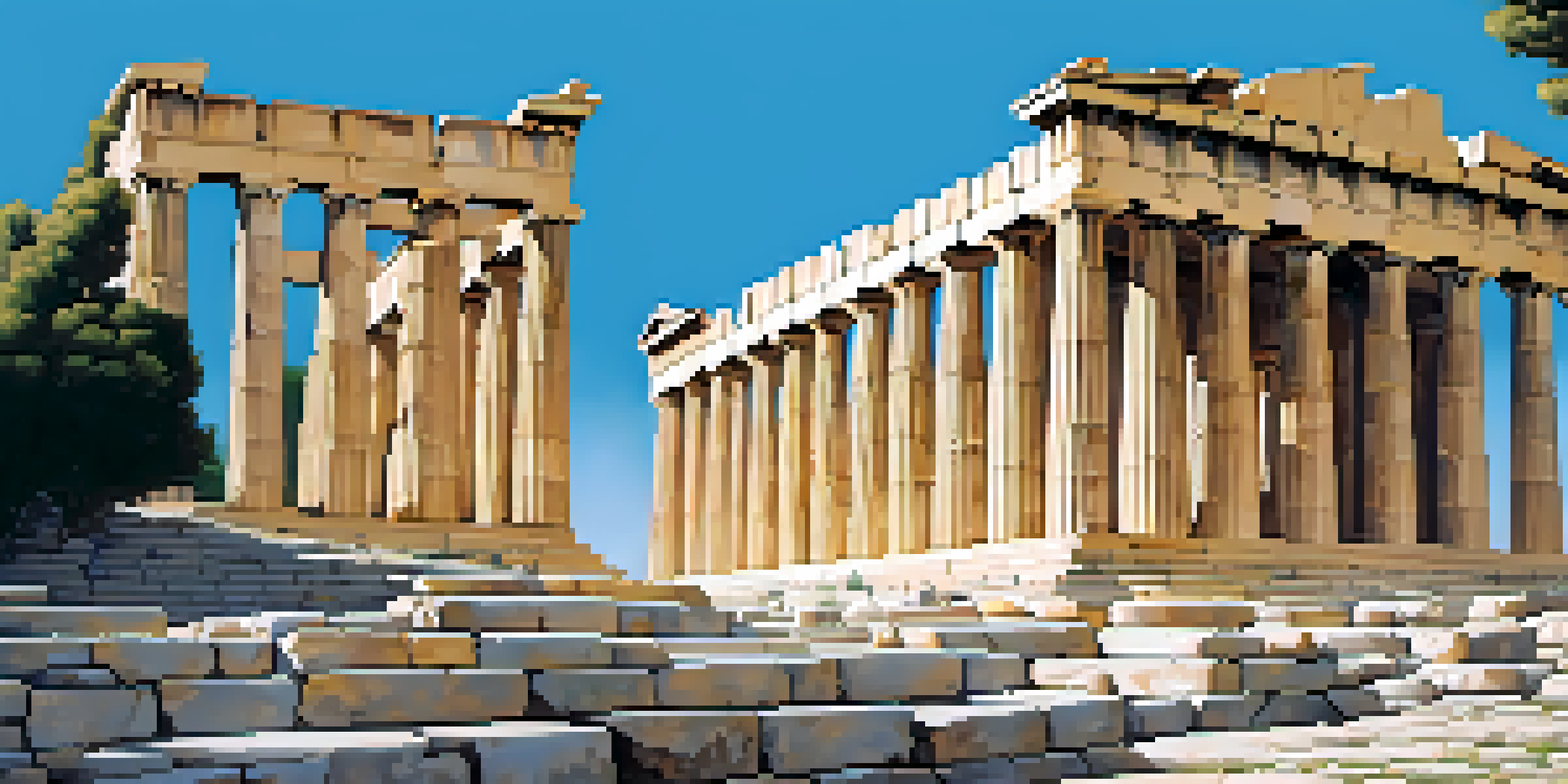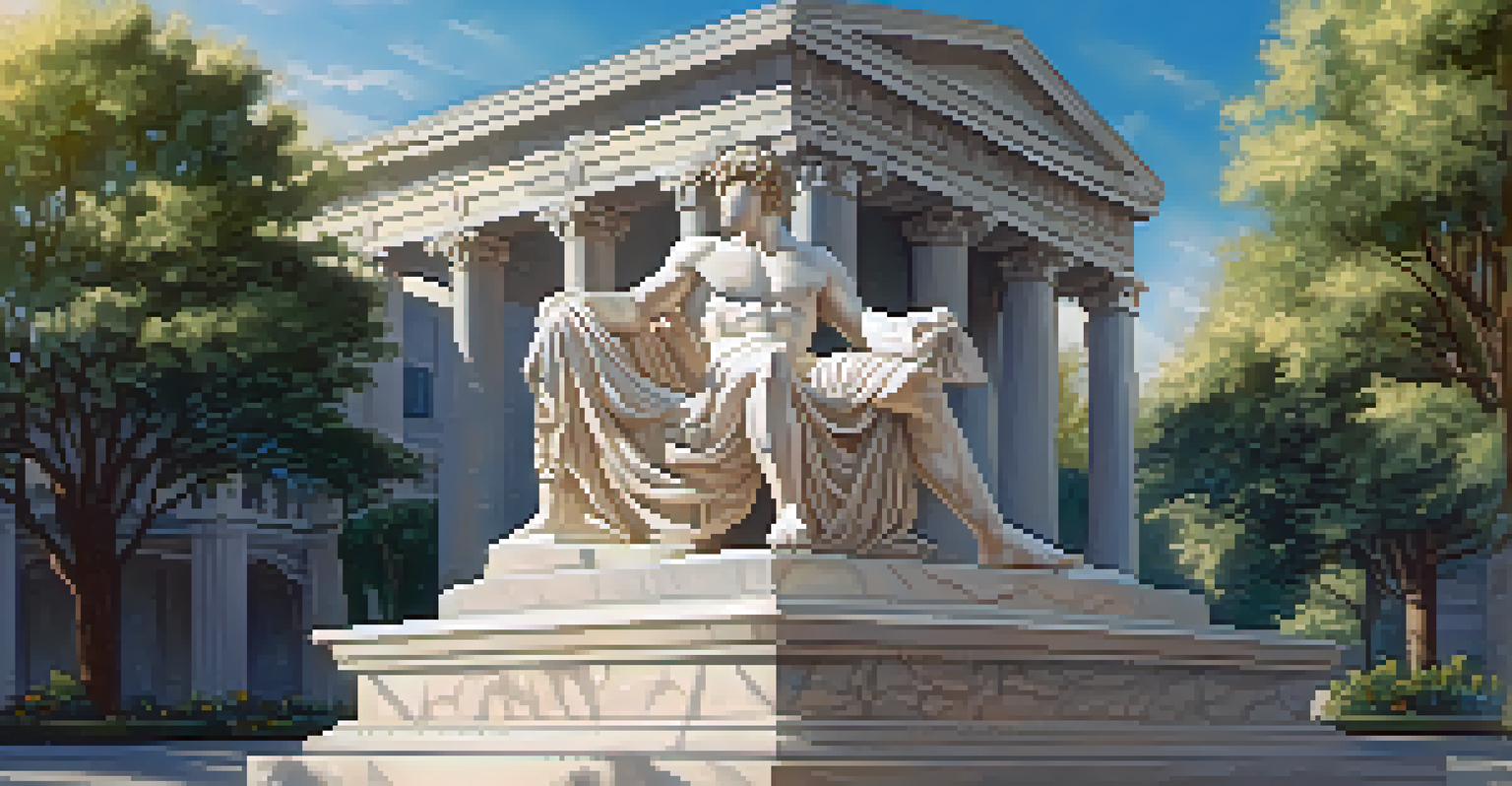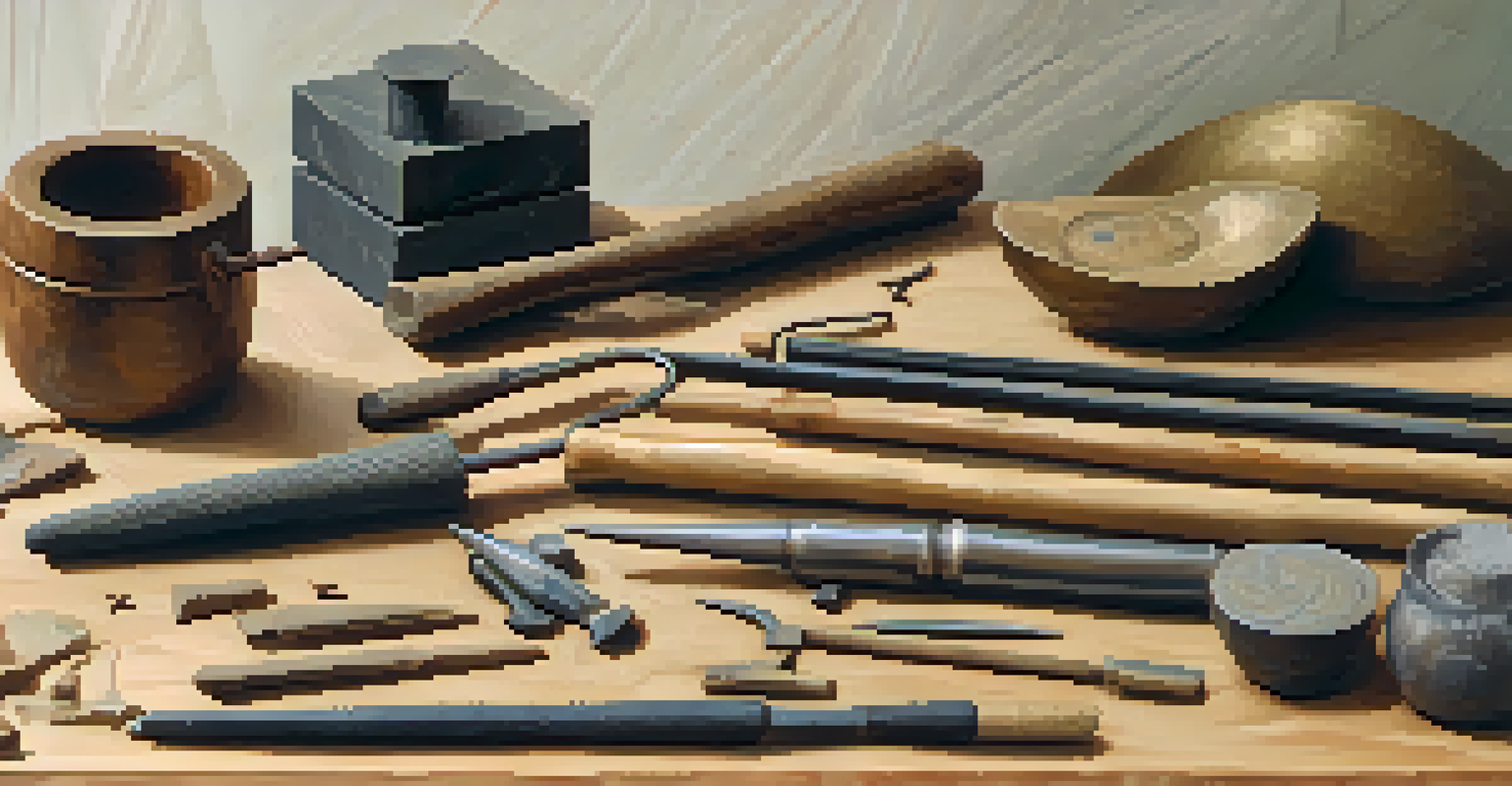The Artistic Legacy of Carving in Ancient Greek Sculpture

Understanding the Roots of Greek Sculpture Carving
The origins of carving in ancient Greek sculpture date back to the 8th century BCE, emerging during the Geometric period. Artists began to experiment with form and representation, moving away from flat designs to more three-dimensional depictions. This shift marked a significant turning point in the art world, as it laid the groundwork for future developments in sculpture.
Art is the most beautiful of all lies.
As Greek society evolved, so did its artistic expressions. The Archaic period, which followed, saw the introduction of more lifelike figures, partly influenced by the Egyptians. Sculptors began to focus on human anatomy and proportions, integrating techniques that conveyed movement and emotion, setting the stage for the masterpieces that were to come.
This early experimentation in carving can be likened to a young artist finding their style. Just as a painter might dabble with colors and techniques, Greek sculptors were exploring their medium, pushing boundaries and redefining what sculpture could be.
The Transition to Realism in Greek Sculpture
The Classical period of Greek sculpture, spanning 480 to 323 BCE, witnessed a dramatic shift towards realism. Artists like Phidias and Polykleitos produced works that exemplified the idealized human form, showcasing a keen understanding of anatomy and proportion. This era is often celebrated for its harmonious balance, as sculptors strove to capture the human experience in an authentic way.

One iconic example is the statue of 'Discobolus,' or the Discus Thrower, which illustrates the dynamic movement and athleticism of the human body. Such pieces not only reflect the physical prowess of athletes but also symbolize the cultural values of the time, emphasizing the importance of physical fitness and beauty.
Greek Sculpture's Evolution Over Time
Ancient Greek sculpture evolved from flat designs in the Geometric period to lifelike figures in the Classical period, showcasing a deeper understanding of human anatomy and emotion.
This push towards realism can be compared to the evolution of photography. Just as early photographers sought to capture life as it is, Greek sculptors aimed to encapsulate the essence of humanity, marking a pivotal moment in the history of art.
The Influence of Mythology in Greek Sculpture
Mythology played a central role in shaping ancient Greek sculpture, with many works depicting gods, heroes, and mythical creatures. Sculptors often drew inspiration from stories found in literature, translating them into visual forms that conveyed deeper meanings and cultural beliefs. This intertwining of art and mythology created a rich tapestry of narratives that resonated with the Greek people.
Sculpture is the art of the intelligence.
For instance, the famous statue of Athena Parthenos, housed in the Parthenon, was not just an artistic achievement but also a symbol of the city of Athens. It celebrated the goddess's role as a protector and reflected the values of wisdom and warfare that the city revered. Such sculptures served both decorative and religious purposes, bridging the gap between art and spirituality.
Think of these sculptures as visual storytelling, much like a modern movie poster that hints at an epic tale. Each piece encapsulated a narrative, inviting viewers to explore the myths and legends that shaped their world.
Techniques and Innovations in Carving
The artistry of Greek sculpture was not only about creativity but also about the techniques employed by the sculptors. These artisans utilized tools made from iron and bronze, allowing them to carve intricate details into marble and limestone. The mastery of these tools enabled them to create works that displayed remarkable precision and lifelike qualities.
Furthermore, the introduction of the 'contrapposto' stance—a pose where the weight of the body is shifted onto one leg—additionally contributed to the realism of the figures. This technique created a sense of movement and life, allowing sculptures to appear more natural and dynamic.
Mythology's Role in Sculpture
Mythology heavily influenced Greek sculpture, as artists depicted gods and heroes, intertwining cultural beliefs with visual storytelling.
Imagine a dancer poised mid-movement, showcasing grace and fluidity. This is what contrapposto achieved in sculpture, revolutionizing how figures were represented and enhancing their emotional impact.
The Role of Public Spaces in Greek Sculpture
Public spaces in ancient Greece served as important venues for showcasing sculpture, with many pieces prominently displayed in temples, agoras, and public squares. These locations not only highlighted the artistic achievements of the time but also reinforced civic pride and cultural identity. The presence of sculptures in these communal areas made art an integral part of daily life.
For example, the Acropolis in Athens is home to several monumental sculptures that celebrate Greek achievements and values. These works were not merely decorative; they were meant to inspire and evoke a sense of belonging among the citizens. They communicated messages about democracy, citizenship, and the divine.
Think of these public sculptures as the billboards of ancient Greece, carrying messages that resonated with the people. They were visual reminders of their heritage and ideals, fostering a collective sense of unity.
The Decline and Enduring Impact of Greek Carving
As the Hellenistic period unfolded, the focus of Greek sculpture began to shift from idealism to emotional expression and individuality. While this marked a decline in the strict adherence to classical forms, it also opened new avenues for creativity. Sculptors started to explore more dramatic poses and intricate details, reflecting a broader range of human experiences.
Despite the eventual decline of ancient Greek civilization, the influence of their sculptural techniques and styles continued to resonate throughout history. The Renaissance era, for example, saw a revival of interest in Greek art, with artists like Michelangelo drawing inspiration from classical forms and philosophies.
Enduring Legacy of Greek Techniques
The techniques and styles of Greek sculpture continue to inspire modern artists and architects, highlighting the timelessness of their artistic achievements.
It’s as if the legacy of Greek carving was a seed planted in the soil of art history, which continued to grow and flourish long after its initial bloom. This enduring impact is a testament to the timelessness of their artistic achievements.
Preserving the Legacy of Greek Sculpture Today
Today, the legacy of ancient Greek sculpture is preserved through museums, educational programs, and ongoing archaeological excavations. Institutions around the world showcase these masterpieces, allowing contemporary audiences to connect with the artistry and cultural significance of the past. This preservation effort fosters appreciation for the skill and creativity of ancient sculptors.
Moreover, the study of Greek sculpture continues to inspire modern artists and architects, who often look back to these ancient techniques for guidance. The principles of balance, proportion, and beauty established by Greek sculptors are still relevant in contemporary design and art.

Think of it as a bridge connecting the past with the present. By preserving the legacy of Greek sculpture, we ensure that future generations can appreciate the brilliance of these ancient artists and the cultural narratives they crafted.